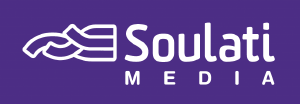
In business crisis communications planning is essential. Having an expert public relations professional on board (ahem) also helps. Your business ought to have a crisis plan on the shelf collecting dust, or rather, on a hard drive easily accessible.
Here’s the rub: no PR professional ever developed a crisis communications plan for a business to manage a global pandemic viral mutation that inhibits the function of the entire world. As a result of this near global shutdown, many businesses are slowing and shuttering temporarily.
Has your business implemented a remote workforce? Maybe employees equipped and ready to work at home will be productive, but guess what? The companies sending moms and dads home to work will see disrupted parents managing children also sent home from closed schools. That means disrupted childcare, more toilet paper (uhm, yes, empty store shelves of paper products!), more soup and grilled cheese lunches, more spats among the kids or the need to transport the kids to the playground all while trying to work and be present and positive during meetings.
Look, all is not lost. The COVID-19 virus, will flat line one day and is temporary. While the U.S. may not know the extent of the virus’s health in communities, there’s a good chance that it will wane within a time frame yet to be determined (how’s that for running around the mulberry bush?).
28 Ways Business Can Focus During A Crisis
There are things businesses can do during an economic crisis of this magnitude. Here are 28 ideas businesses can take advantage of time and put it to good use right now:
- Do NOT reduce your marketing budget during a crisis. This is an opportune time to initiate customer campaigns oriented to education and relationship-building.
- Strategize about public relations campaigns during a time frame about six-to-eight months ahead.
- Look at the conference and trade show schedule in your vertical market and plan to attend. Purchase a booth; run a customer prospecting campaign to meet people in person (once social distancing is no longer the norm).
- At that trade show in #3, ask your CEO or other thought leader to speak in a break-out session or sponsor a session for attendees (that you pay for).
- For the trade show in #3 (and other conferences you may attend), pull your exhibit booth out of the closet, dust it off and take a look at what needs refreshing. How are the colors, is the logo prominent, and what about the message?
- Hire a facilitator to do a Message Map with your leadership team. This is always an important exercise to bring the leadership team together to discuss the 5 Ws about your company. Focus especially on the Why of your existence. (Want to know more about message mapping? Give Soulati Media a shout, and we will share more.)
- Revisit your Mission, Vision, Values statements and ensure that your company is on track, working against each of these important foundational items your company follows.
- Going one step further, explore your business purpose. What drives you beyond revenue generation? What purpose do you have for being in existence? This is not something to answer in 10 minutes. Take some time to meet with the leadership team and mull it over.
- Your website needs TLC. When we’re busy, websites hit the back seat. If your company is feeling a pinch during this economic downturn with fewer customers then take a look at every single page of your website to see if you approve.
- While you’re at it, click on every link on each page and ensure it’s not broken.
- Check all images on your site for the proper ALT code. If you don’t know how to do any of those items, then call for assistance. There’s always something you can do to freshen your website during a down tick.
- Do you use landing pages for campaigns you’re running? How many? How are they functioning for you? Again, this is a very good time to review all digital assets to ensure proper function, content, images, and success metrics.
- B2B companies do very well with newsletters to customers and prospects. When a business slows, that’s when marketing upticks. There’s no time like the present to launch a newsletter or refresh an existing newsletter and communicate en masse to your customers.
- Don’t want to do a newsletter? Then let’s go with more email marketing! You can create a new campaign to celebrate the end of virus fears with a promotion to get customers back in sync with your business.
- Hire a photographer (and support the economy). Here’s why: you can retake all the head shots of the leadership team in your company; you can take high-resolution images of your company in action (and use these on social media and your website), and the images can be used in communications with customers.
- Do you have a high-performing video marketing program with a YouTube, Vimeo or Twitch channel? During a downtime develop one! The whole point of this is “there’s no time like the present” to focus on things you neglected because of a time crunch. Video is the future, and the data are staggering about just how many videos exist on each social media channel. Don’t get left in the cold!
- Develop your digital marketing strategy. Look at all the ways you can live stream, bring people into a community, do virtual meetings and conferences, bring all your assets to the web, open an e-commerce site, and so much more.
- Plan a webinar series. In #B2B marketing, webinars are a wonderful way to communicate with customers. It’s smart to have a series of webinars with three topics scheduled over the course of six weeks. One of the webinars can be your product team speaking about something new alongside the CEO talking about the vision for the future. The other two can be with customers on a panel speaking about a product or service. When you invite others to attend, you collect emails and use those emails to develop your list for email marketing and newsletters.
- Focus on business development. As everyone is in the same boat with the current business climate, now is an excellent time to revisit your strategy to earn more customers. This is where your entire marketing team needs to meet and discuss ways to earn new business.
- Go on a retreat. No business schedules a retreat when everyone is chaotically working. Now? What a perfect time to bring the leadership team and directors together to revisit #7 and #8 and also look at new growth opportunities in the future.
- Continue your efforts with social media, do not go on hiatus just because your business has gone virtual. As everyone stays closer to home, they will spend more time on the Interwebz surfing. There’s no question you can maintain conversation and engagement with your audience.
- Survey your employees. A downtime is excellent for a word from your employees. Building a Survey Monkey provides a perfect vehicle to gauge what employees think about the state of the business. Offer a gift card to the employee with a novel idea that you implement.
- Build a customer loyalty program. For frequent buyers of your products, implement a customer loyalty program with incentives that bring them back over and over again.
- Talk with your customers. When was the last time you picked up the phone and had a no-pressure conversation with a customer? This would not be a sales call but a call to deepen and strengthen relationship.
- Meet with a non-profit. Do you have a volunteer day where your employees leave work and volunteer for a day to work for a non-profit? What about adopting a non-profit every two months so that some of your company’s efforts, like pro bono work, go to a charity?
- Review all of the subscriptions your business pays for whether it’s periodicals, newspapers, apps, photography and turn off automatic renewals. How many automatic renewals exist at your business? Then only after they renew, you remember you signed up.
- Develop a new product or service. You can make a new product or service as an e-book or online course for prospects and even current customers to remind them that your services go deeper than just one layer.
- Clean your email box(!) and clean your desk, your closets and reduce, recycle, reuse!
I’m sure that after reviewing this list, you’ll think of many other things you can do during a downtime. While this situation is hugely unfortunate, consider it an opportunity. No one takes time under “normal” circumstances to do most of the above, so why not now?

![799px-Hoh_Rain_Forest_Maples[1]](https://soulati.com/wp-content/uploads/2010/08/799px-Hoh_Rain_Forest_Maples1-300x225.jpg)




